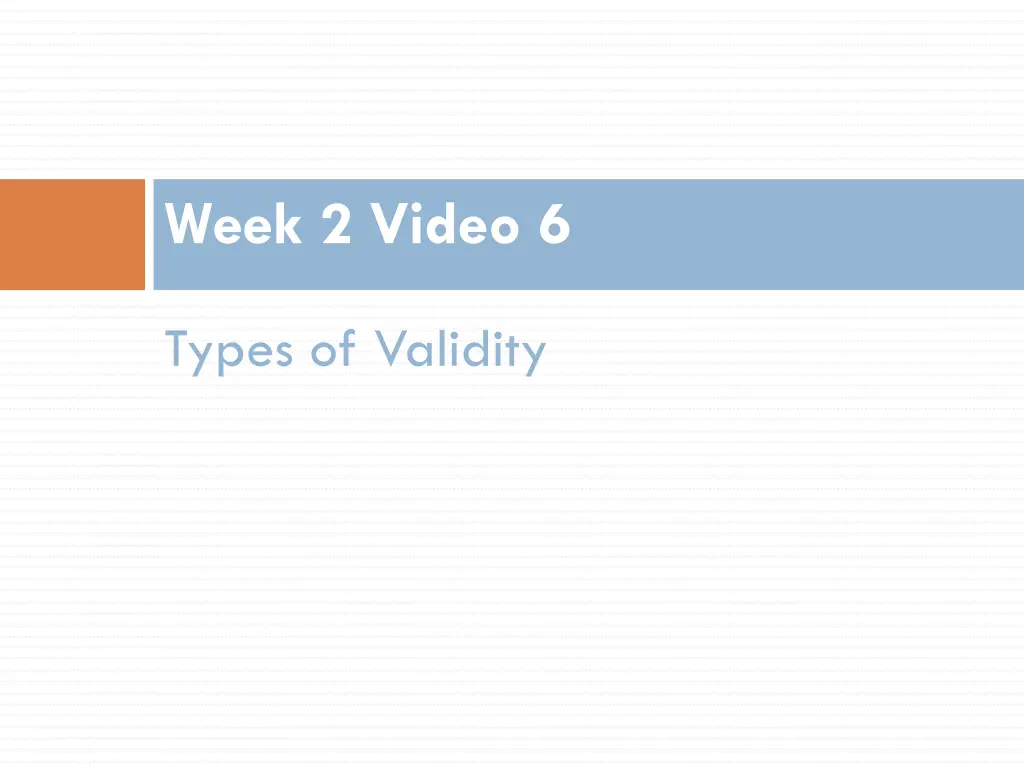
Understanding Different Types of Validity in Data Analysis
Explore the various types of validity in data analysis, including generalizability, ecological validity, and construct validity. Learn how these concepts impact the effectiveness and applicability of data models in different scenarios.
Download Presentation

Please find below an Image/Link to download the presentation.
The content on the website is provided AS IS for your information and personal use only. It may not be sold, licensed, or shared on other websites without obtaining consent from the author. If you encounter any issues during the download, it is possible that the publisher has removed the file from their server.
You are allowed to download the files provided on this website for personal or commercial use, subject to the condition that they are used lawfully. All files are the property of their respective owners.
The content on the website is provided AS IS for your information and personal use only. It may not be sold, licensed, or shared on other websites without obtaining consent from the author.
E N D
Presentation Transcript
Week 2 Video 6 Types of Validity
Generalizability Does your model remain predictive when used in a new data set? Underlies the cross-validation paradigm that is common in data mining Knowing the context the model will be used in drives what kinds of generalization you should study
Generalizability Fail Model of boredom is built on data from 3 students Model fails when applied to new students
Ecological Validity Do your findings apply to real-life situations outside of research settings? For example, if you build a detector of student behavior in lab settings, will it work in real classrooms?
Ecological Validity Fail Detector of Off-Task Behavior is built based on data from lab study where students use the software one at a time Detector is then applied to classroom data
Ecological Validity Subtle Fail Model predicting high school dropout is built on data from 300 students, all from middle-class suburban schools Model is cross-validated at student level Model fails when applied to urban students
Construct Validity Does your model actually measure what it was intended to measure?
Construct Validity Does your model actually measure what it was intended to measure? One interpretation: does your model fit the training data?
Construct Validity Does your model actually measure what it was intended to measure? One interpretation: does your model fit the training data? But is your training data correct?
Construct Validity Fail You re trying to detect from disciplinary records which students will end up in alternative school But your label of alternative school also includes students with cognitive or developmental disabilities sent to a special school
Predictive Validity Does your model predict not just the present, but the future as well? It is difficult to make predictions, especially about the future. Niels Bohr
Substantive Validity Do your results matter? Are you modeling a construct that matters? If you model X, what kind of scientific findings or impacts on practice will this model drive? Can be demonstrated by predicting future things that matter
Substantive Validity For example, we know that boredom correlates strongly with Disengagement Learning Outcomes Standardized Exam Scores Attending College Years Later
Substantive Validity By comparison, whether someone prefers visual or verbal learning materials doesn t even seem to predict very reliably whether they learn better from visual or verbal learning materials (See lit review in Pashler et al., 2008)
Content Validity From testing; does the test cover the full domain it is meant to cover? For behavior modeling, an analogy would be, does the model cover the full range of behavior it s intended to? A model of gaming the system that only captured systematic guessing but not hint abuse (cf. Baker et al, 2004; my first model of this) Would have lower content validity than a model which captured both (cf. Baker et al., 2008)
Conclusion Validity Are your conclusions justified based on the evidence?
Many Dimensions of Validity Important to address them all
End of Week 2 See you next week
